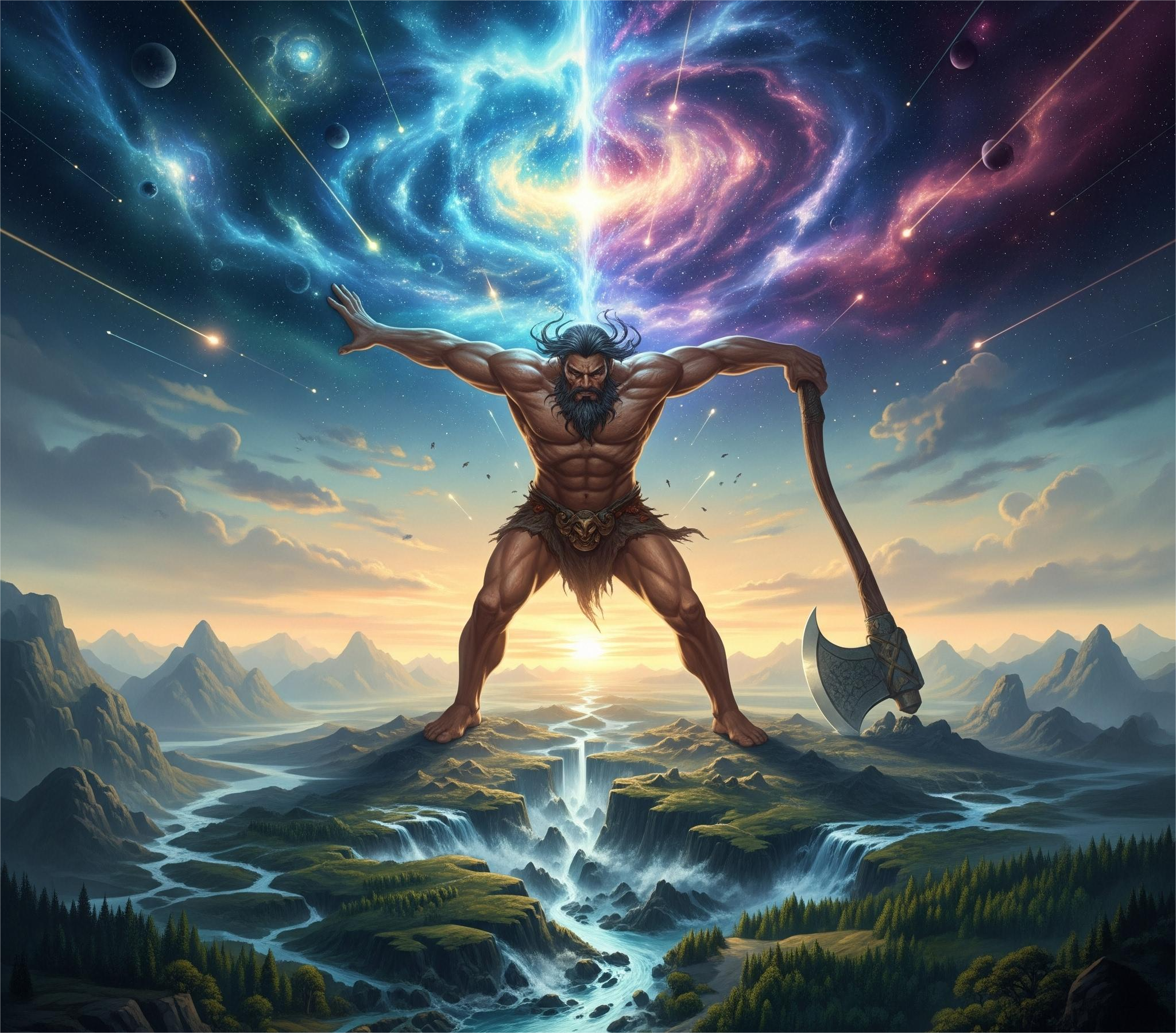In the vast tapestry of Chinese mythology, few figures loom larger—literally and symbolically—than Pangu (盘古). Described as a cosmic giant, Pangu is credited with creating the universe itself. His story, though not as well-known outside of East Asia as other creation myths, lies at the heart of ancient Chinese cosmology and philosophical thought.
Let’s explore the myth of Pangu, his role in shaping heaven and earth, and how this story helped ancient China conceptualize the structure of the universe and humanity’s place within it.
The Myth of Pangu: A Universe Awakes
The creation myth begins not with light or gods, but with chaos—a primordial cosmic egg that held all things in a swirling, undivided state. For 18,000 years, this egg gestated the elements of yin and yang until, finally, it cracked open.
From within emerged Pangu, a giant covered in hair, horns, and tusks—a primal being born of cosmic force.
With one mighty push, Pangu separated the sky from the earth, using a giant axe.
Each day for the next 18,000 years, he pushed the sky higher and the earth thicker, growing alongside them to ensure they never collapsed back into chaos.
When his task was complete, Pangu died—but his body became the world:
His breath became the wind and clouds.
His voice the thunder.
His eyes the sun and moon.
His body and limbs the mountains and land.
His blood the rivers, his hair the forests, and his bones the minerals.
In this myth, the world is literally made of the god—a concept found in other mythologies too, but in Pangu’s case, it deeply connects the physical world with the sacred.
Symbolism and Philosophical Roots
Pangu’s myth is steeped in Taoist cosmology:
The cosmic egg reflects Dao (道)—the primordial unity of all things before form.
The act of division between yin and yang embodies the fundamental duality in Chinese thought: dark and light, soft and hard, passive and active.
The balance Pangu maintained during creation became a template for harmony in both nature and society.
This myth wasn’t just a story—it was a philosophical map of the cosmos. It illustrated how balance, effort, and transformation shape the world.
Pangu in Folk Worship
While Pangu doesn’t occupy a prominent place in formal Taoist or Confucian rituals, he endures in Chinese folk religion:
Shrines to Pangu can be found in southern China, especially in Fujian, Guangdong, and Guangxi, where locals offer incense and prayers to the “First Being.”
Some Hakka communities celebrate festivals in his name, viewing him as an ancestral spirit and guardian.
Pangu is also revered as a symbol of tireless labor—a mythological craftsman whose work laid the foundations of the world.
In many ways, Pangu reflects the ideal of self-sacrifice for the greater whole—an idea deeply rooted in Confucian values.
Influence on Chinese Cosmology
Pangu’s myth shaped more than imagination—it influenced ancient science and metaphysics:
The idea of the world being formed through gradual separation and differentiation mirrors ancient Chinese models of the cosmos, such as those found in early Han Dynasty texts.
The concept of Heaven (Tian) as a rising force and Earth (Di) as a grounding, spreading force is embodied in Pangu’s upward and downward push.
Later Taoist alchemists and geomancers (feng shui masters) drew from these ideas when mapping cosmic energy flows, qi (气), in landscapes and human bodies.
In this sense, Pangu’s myth was foundational to how ancient Chinese people understood both the universe and themselves—not as separate, but as parts of one breathing, balanced whole.
A Giant Among Myths
Though there are older myths in China, the story of Pangu—first recorded in written form during the 3rd century CE by Xu Zheng in the Three Five Historic Records (三五历纪)—remains one of the most evocative. It stands out for its grandeur and cosmic imagination, offering a uniquely Chinese vision of how creation emerges from chaos not through divine command, but through effort, balance, and transformation.







